Drumroll…
The 2021 Nashville Nine
Each year Historic Nashville accepts nominations for listing on the Nashville Nine which serves as Historic Nashville’s strongest advocacy tool for the places that matter most to Nashville. These are buildings, neighborhoods, or historic landscapes in danger of being lost to demolition, redevelopment, or neglect. The annual list is the focus of Historic Nashville’s advocacy and outreach throughout the coming year. We then work with property owners, elected officials, government agencies, neighborhood leaders, and the public to educate, evaluate and create solutions for preserving these important elements of Nashville’s unique history and sense of place.
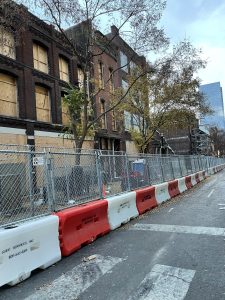
1-4. Second Avenue North, 170, 172, 174, and 176 Second Avenue North
Nobody imagined that, just a few weeks after Historic Nashville, Inc., announced its 2020 Nashville Nine, someone would set off a bomb in one of Nashville’s most historically significant areas, putting at risk an entire stretch of Second Avenue North that had remained remarkably consistent for more than a century. Nearly a year after the Christmas Day Bombing, plans are in place to restore and rebuild much of the four buildings most damaged by the blast, 170-176 Second Avenue North. Historic Nashville holds preservation easements on all four of those properties. One of those buildings, 172 Second Avenue North, was damaged beyond repair. Proposed plans for the other three buildings appear to generally comply with the Metro Historic zoning overlay, but proposals and finished development are entirely different things. With its preservation easements, Historic Nashville made a commitment that these precious pieces of our history are protected in perpetuity, and we urge those implementing the rebuilding to make sure the buildings retain as much of their historic and architectural integrity as possible.
5. 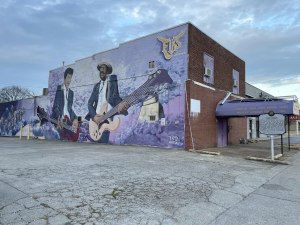 Elks Lodge #1102, 2614 Jefferson Street
Elks Lodge #1102, 2614 Jefferson Street
Since 1968, the concrete block building at 2614 Jefferson Street has housed Elks Lodge #1102, an important part of the neighborhood community. Before that, though, it was an integral part of Jefferson Street’s live-music scene as Club Baron. From the mid-1950s through the mid-1960s, Club Baron booked the likes of B.B. King, Muddy Waters, Ray Charles, Little Richard, Fats
Domino, and Etta James. The mural on the side of the building commemorates a legendary 1963 guitar duel between Jimi Hendrix and local blues guitarist Johnny Jones. Jones is said to have won that showdown, partly because Hendrix was still developing his genre-shaking sound and partly because Jones had the more powerful amplifier. Like many buildings in North Nashville, the structure suffered damage during Nashville’s March 2020 tornado and has other issues that need addressing. Preserving a building with such significance in the local community and the city’s musical history should be a priority.
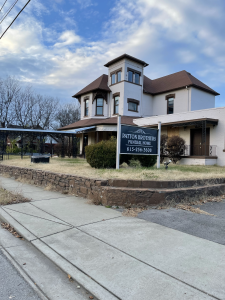
6. Patton Brothers Funeral Home, 1306 South Street
The Victorian-style structure at 1306 South Street is one of the most historically significant Black funeral buildings still standing in Nashville, a reminder of the city’s segregated past. Patton Brothers Funeral Home operated for nearly 70 years at the location, though the site’s mortuary history goes back nearly a century. From the 1920s, it was the Zema W. Hill Funeral Home, run by a charismatic Primitive Baptist evangelist whose marketing efforts included the placement of two snowball-toting concrete polar bears in front of the parlor — and two others in front of his home on Edgehill Avenue. Patton Brothers, which began in Franklin, TN, in 1882, bought out Hill in 1952 when he decided to retire and continued there for many years. A new owner purchased the property earlier this year, putting the building in danger of demolition.
7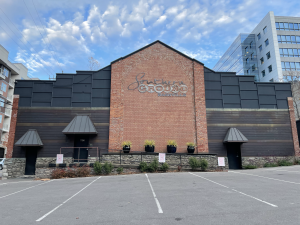 . Southern Ground, 114 17th Avenue South
. Southern Ground, 114 17th Avenue South
The recording studio owned by musician Zac Brown for the past decade began as a Sunday school building for the Addison Avenue Cumberland Presbyterian church 120 years ago. The congregation, which bought the property at the southeast corner of Addison Avenue (now 17th Avenue South) and McGavock Street in 1897, worshipped there from 1901 until 1950. The building subsequently housed the Nashville School of Fine Art, the Nashville Royal Order of Moose lodge and a Veterans of Foreign Wars clubhouse before Monument Records head Fred Foster purchased it in 1968 and transformed it into a recording studio. Monument artists like Kris Kristofferson and Larry Gatlin recorded their early albums at the studio Sammi Smith cut her hit version of Kristofferson’s “Help Me Make It Through the Night” there, and Tom T. Hall recorded “Homecoming.” During part of the 1970s and 1980s, it operated as Young ‘Un Studios. Brown bought the building in 2012 and renovated the studio. In the past decade, Zac Brown Band and acts ranging from Kacey Musgraves and Dwight Yoakam to Megadeth and Foo Fighters have recorded there. Brown put the studio on the market, putting the future of both the studio and the structure in question.
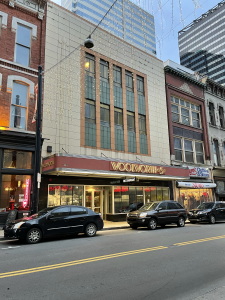
8. Woolworth Building, 221 Fifth Avenue North
The interior of The Woolworth Building is currently undergoing extensive renovations as it prepares to re-open next year as the Woolworth Theatre. While we applaud uses that keep this site accessible to the public, we also want to remind the current occupants that they are stewards of one of the most important spaces in this city’s history. Built in the 1890s, this building was occupied for 80 years, from 1913-1993, by retailer F.W. Woolworth Co. In 1960, it became the focal point of efforts to desegregate the city’s lunch counters. Because of those events, the Woolworth Building is now a national historic site. The previous tenant, the Woolworth on 5th restaurant, sought to preserve as much of the original interior architecture as possible and emphasized this history before closing last year due to the COVID-19 pandemic. As the current tenants prepare for the next chapter in the story of this site, we recommend that they bring in a with a specialization in the Civil Rights Movement or Black Freedom Struggle, a trained historic preservationist, and a conservator who can assist with the identification and care of the building’s remaining historic elements. Sometimes, historic preservation encompasses not only a building’s exterior but also respect for the interior where historic events took place.
9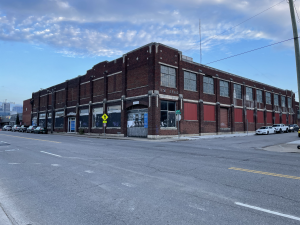 . Coca-Cola Bottling Plant, 1525 Church Street
. Coca-Cola Bottling Plant, 1525 Church Street
Known to many as the Old Jim Reed Showroom, this 1920s brick warehouse building was originally part of the Coca Cola Bottling Works. In the 1970s, the soft drink bottling plant was converted for use as Jim Reed’s automobile dealership. Located in Midtown, the building is an excellent example of ornate industrial architecture from the early twentieth century and perhaps Nashville’s last remaining historic soft drink bottling plant. Members of the community are worried that this unique historic landmark could be demolished for new development. In the 1990s, part of the building was converted into a nightclub. The plant building previously appeared on the 2014 Nashville Nine. With downtown high-rise development now extending along the West End-Church Street corridor, the likelihood the building will be demolished is increasing.


 Elks Lodge #1102, 2614 Jefferson Street
Elks Lodge #1102, 2614 Jefferson Street
 . Southern Ground, 114 17th Avenue South
. Southern Ground, 114 17th Avenue South
 . Coca-Cola Bottling Plant, 1525 Church Street
. Coca-Cola Bottling Plant, 1525 Church Street